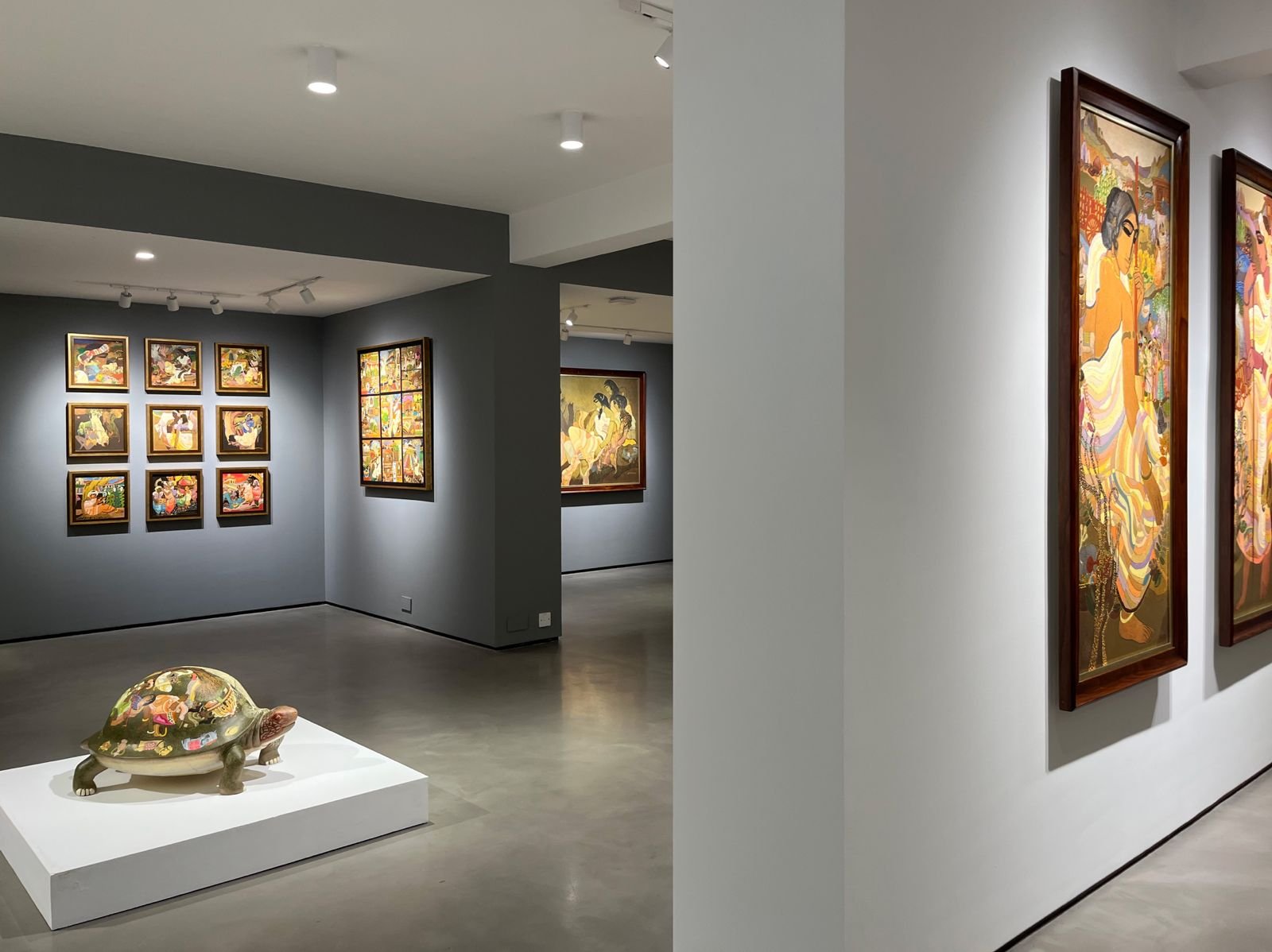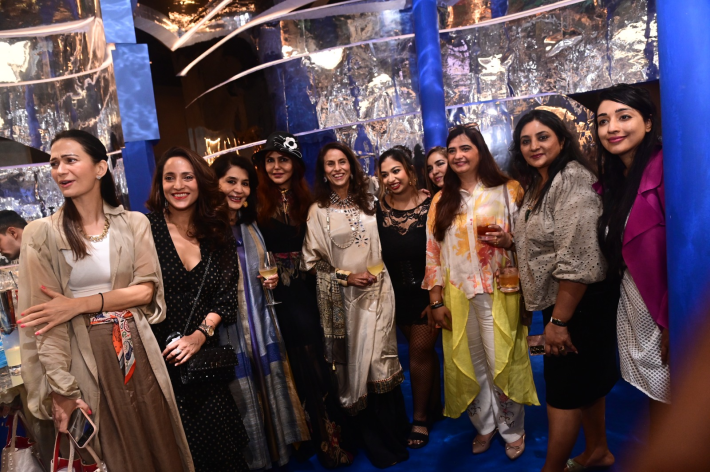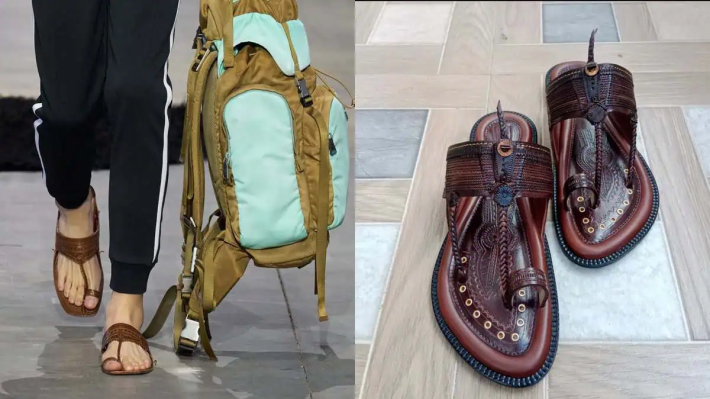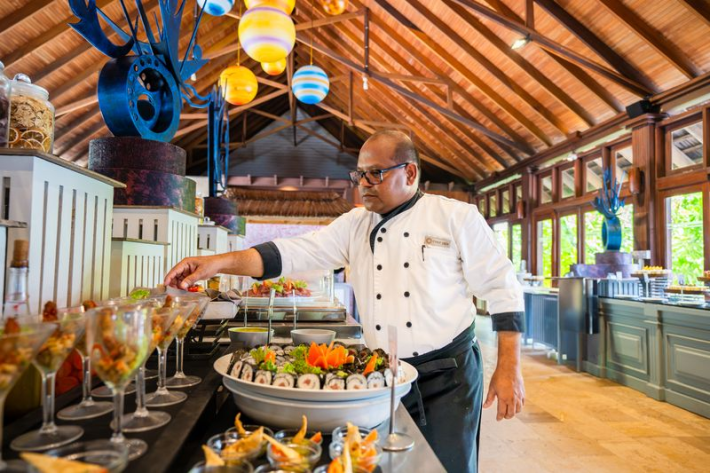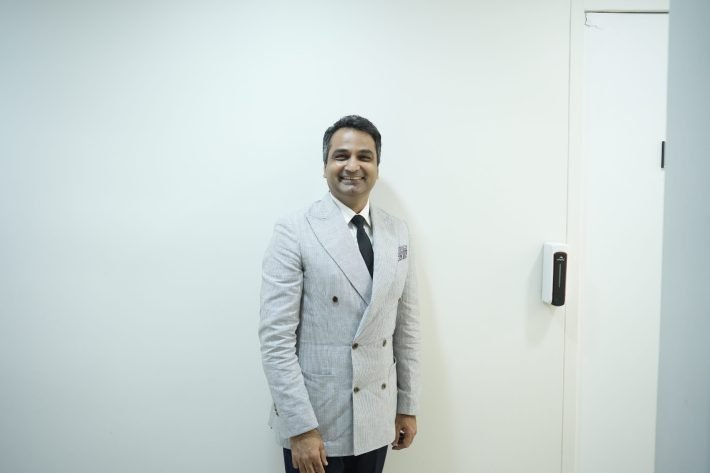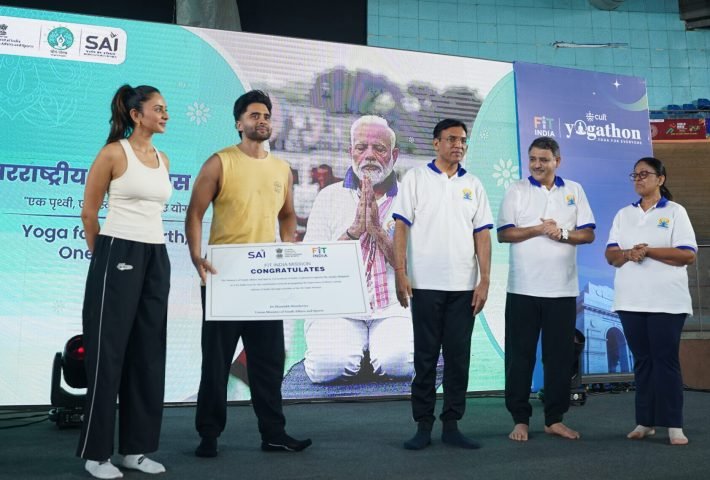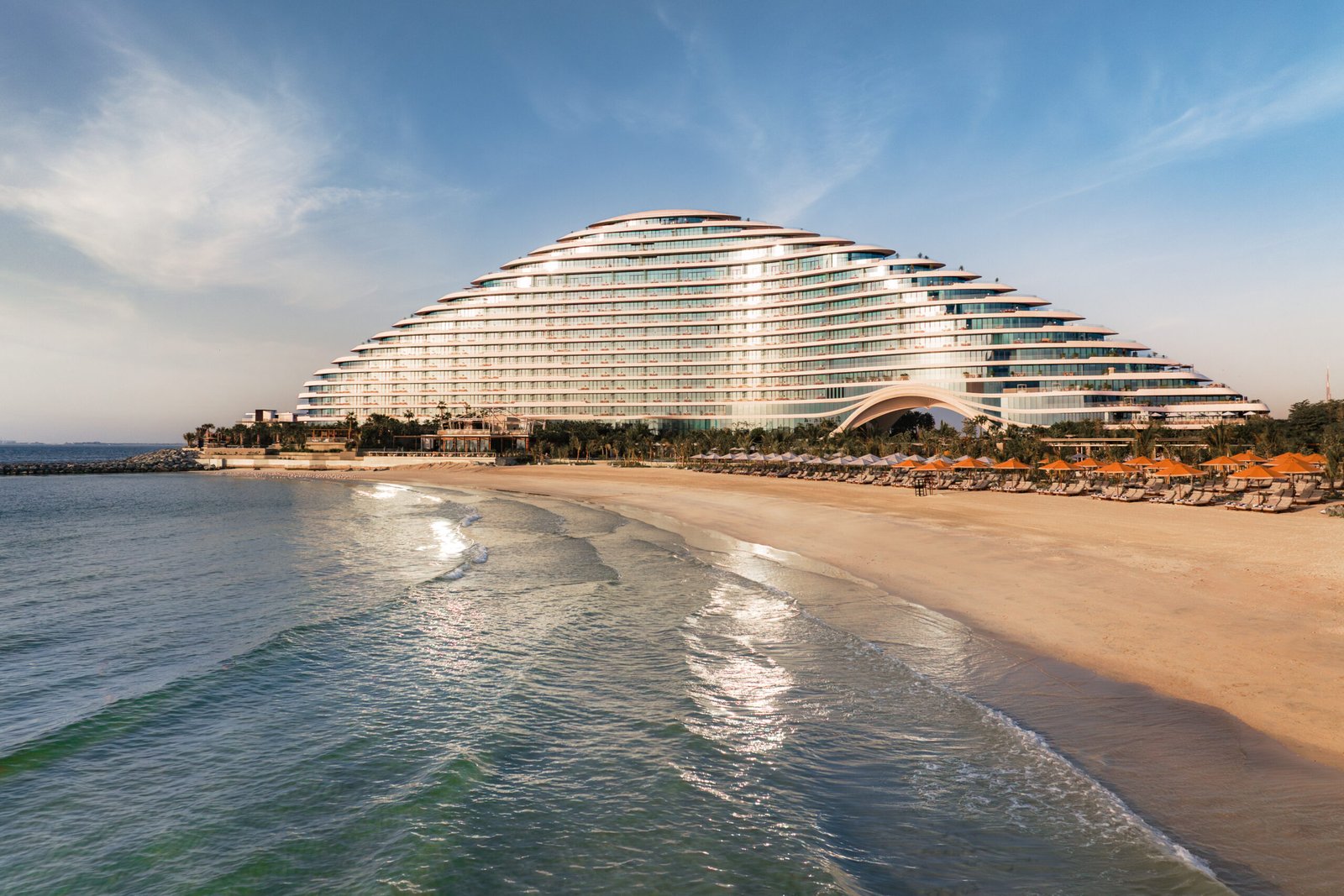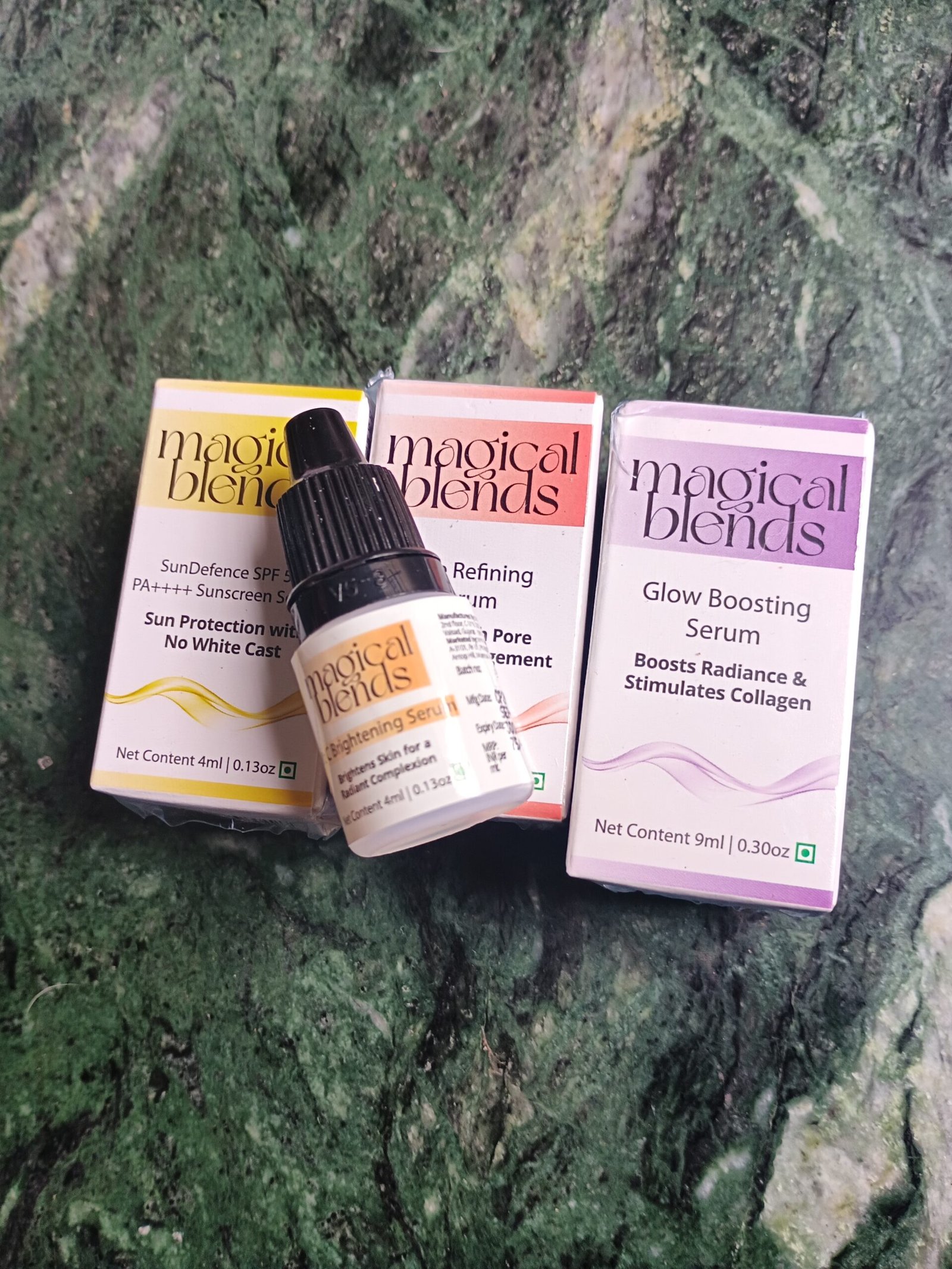There’s something magical about the way artist Siddharth Shingade captures light. Sitting across from him in KYNKYNY Art Gallery, I watch as he gestures toward a canvas awash in sunflower yellows and ocean blues—colours that seem to pulse with life against the gallery’s white walls. His latest exhibition, “Ephemeral Homelands”, transforms the Marathwada landscapes of his childhood into something both deeply personal and universally resonant.


TheGlitz gets into an exclusive chat with Siddharth Shingade as he reflects on his journey. “The village remembers you even when you leave it behind,” he tells me, eyes crinkling slightly at the corners. Tuljapur, his hometown, exists now in two realms—the bustling town it has become and the serene village preserved in his memory and art. His paintings, structured like the intricate patchwork “chaddars” of nomadic women, weave together mythology and rural life with figures whose earth-toned skin connects them intrinsically to the land they inhabit.
As we walk through the gallery, Shingade’s evolution as an artist unfolds before us—each canvas a celebration of resilience from India’s heartland. Over to Siddharth Shingade…
Ephemeral Homelands, a solo exhibition by Siddharth Shingade

TheGlitzMedia: Give a quick introduction to TheGlitz readers. What drives you as an artist coming from rural Maharashtra to Mumbai?
Siddharth Shingade: When I paint, my childhood memories rise to the surface—vivid, personal, and taking shape organically on canvas. These recollections aren’t meticulously planned; they flow naturally, shaped by my emotions and reflections of the moment. Both past and present experiences reside within me, fuelling my creative expression.
The nostalgia in my work isn’t merely longing for what’s gone—it’s a celebration of formative moments, people, and places. Meanwhile, the optimism stems from my deep belief in human resilience and the beauty that persists even through struggle. Art ultimately reflects what you carry inside; you can only share with the world what exists within yourself.
For me, this means expressing the memories that have made a home in my heart while embracing the hope that propels me forward. This balance isn’t deliberate—it’s simply my truth, emerging naturally in every piece I create.

TGM: Your work vividly portrays Tuljapur. How did growing up in this village shape your artistic vision before it transformed into the busy town it is today?
SS: Rural life embodies a particular kind of struggle—one often unrecognised by those living it. In my childhood, I was surrounded by farmers working the fields, artisans handcrafting intricate quilts, boatmen ferrying villagers across rivers, and musicians whose melodies filled our days. Their livelihoods and quiet resilience profoundly shaped me. I would spend hours observing them, mesmerised by their unhurried rhythm and the contentment evident on their faces despite hardship. Their craftsmanship, connection to the land, and unadorned authenticity became a source of inspiration for me.
The contrast became striking when I relocated to Mumbai. The city’s relentless pace illuminated the deliberate cadence of village life I had left behind. Urban chaos awakened a yearning for the tranquillity I once knew. This longing began permeating my work as I revisited these memories through art.
The brighter yellows and blues in Ephemeral Homelands reflect this duality—capturing both the vibrancy and hope I associate with rural existence, while earthy tones ground the work in the reality of struggle. Through this palette, I preserve a fading way of life that remains profoundly meaningful to me, sharing the beauty I discovered in rural simplicity.

TGM: The embroidered patchwork quilts made by nomadic gypsy women clearly influence your painting style. Could you share a specific memory of these women that left a lasting impression on you?
SS: My village, Tuljapur, neighbours Sholapur—a town renowned across India for its exquisite embroidered chaddars. These quilts, celebrated for their intricate patterns, vibrant colours, and meticulous craftsmanship, draw collectors worldwide. As a child, I was captivated by the nomadic artisans who journeyed from village to village, displaying their handcrafted treasures. Their creations transcended mere products—they stood as living testimonies to skill, creativity, and devotion.
During my college years, I journeyed to Sholapur to study these artisans’ techniques firsthand. I wanted to immerse myself in their process—observing how they sketched designs, selected colour palettes, and chose threads that would realise their visions. The wooden machines they operated with precision, the meticulous placement of each stitch, and the narratives embedded within each pattern fascinated me. Their unwavering dedication despite their nomadic challenges resonated profoundly. Their craft—a harmonious blend of tradition, innovation, and passion—inspired me to incorporate similar elements into my own artistic expression.
The layered textures in my paintings, reminiscent of stitches and embroidery, pay direct homage to these artisans and their chaddars. Every brushstroke and detail reflect the care and creativity I witnessed in their work. I frequently include the artisans themselves as essential figures within my compositions—not merely as subjects but as spiritual collaborators whose influence permeates the very essence of my creative process.

TGM: I notice you blend mythology with everyday rural life, portraying farmers and gypsies with divine qualities. What inspired this spiritual dimension in your work?
SS: The village where I was born was steeped in timeless religious traditions, anchored in the worship of our local goddess, Tulja Bhavani Maata. Her devotion filled the village from dawn till dusk with the comforting melodies of prayers, bells, and rituals. These sounds and sights became an inseparable part of my childhood, leaving a deep imprint on my memory and cultivating a sense of community and reverence that defined the fabric of our lives.
Under the guidance of my mentor—a deeply intellectual man devoted to the principles of Buddhism—I learnt to question the concepts of spirituality and divinity. Though I initially distanced myself from belief in God, my artistic journey became a profound medium for self-discovery and exploration of these ideas.
This journey took an evocative turn when a viewer’s remark about my work inspired me to see the villagers I depicted—farmers, artisans, and musicians—as divine figures. Through their resilience, simplicity, and connection to the land, I began portraying them as gods and goddesses, elevating their humanity with an aura of sacredness.
My fascination with mythology, especially the complex figure of Shiva, played a significant role in the blend. Shiva’s symbolism—his crescent moon, dreadlocks, blue neck, tiger skin, and trishul—embodies the interplay of creation and destruction, calm and chaos, which resonates deeply within my artistic exploration.
By intertwining these mythological and human elements, I aim to celebrate the extraordinary within the ordinary—a tribute to the traditions that shaped me and an introspection into spirituality and identity. Through my art, I aim to bridge the gap between the earthly and the eternal, inviting viewers to see the divine in the familiar and the sacred in the mundane.

TGM: There’s both beauty and wistfulness in your depiction of Marathwada. How do you balance celebrating rural life while also acknowledging the ecological fragility and hardships faced by these communities?
SS: I don’t consciously set out to infuse my work with beauty or hope—it’s not something I actively think about when I sit down to paint each day. My art is a reflection of my state of mind, my emotions, and the experiences that surface in that moment. If I’m feeling hopeful, it naturally finds its way into my work, whether through the choice of colours, the composition, or the energy of the brushstrokes.
Inspiration, for me, is a fluid force—it can emerge from both joy and sorrow, and it’s up to the artist to channel it into something meaningful. This is true not just for painting but for all forms of creative expression, whether it’s poetry, music, dance, or any other art form.

Don’t miss “Ephemeral Homelands”, featuring Siddharth Shingade‘s acrylic on canvas works, running from March 21st to April 18th, 2025, at KYNKYNY Art Gallery (104 Embassy Square, 148 Infantry Road, Bangalore 560001). The exhibition presents a rare opportunity to witness Shingade’s vibrant reimagining of rural Marathwada through his signature style—where traditional narratives meet contemporary expression in a celebration of memory, place, and identity.
